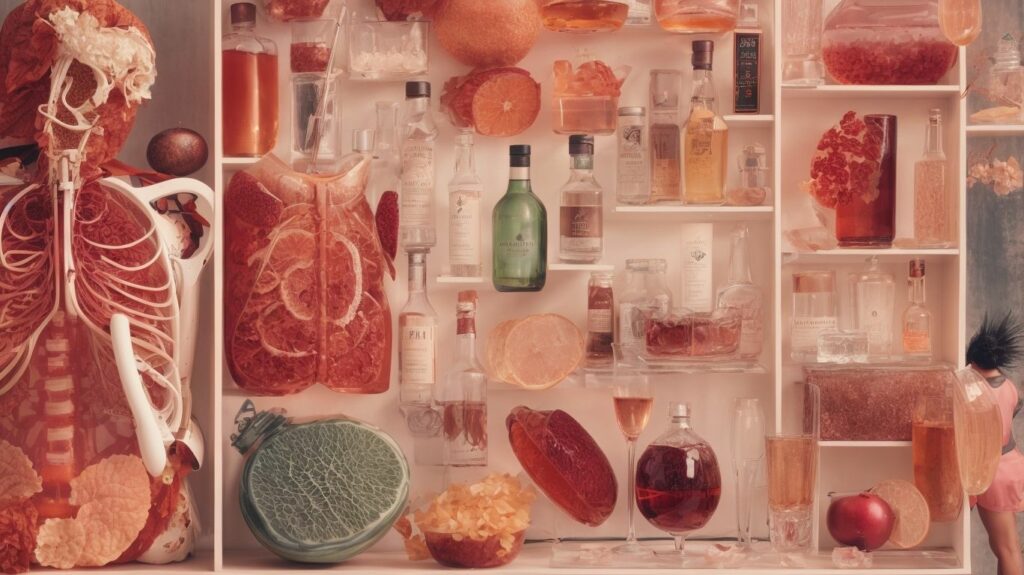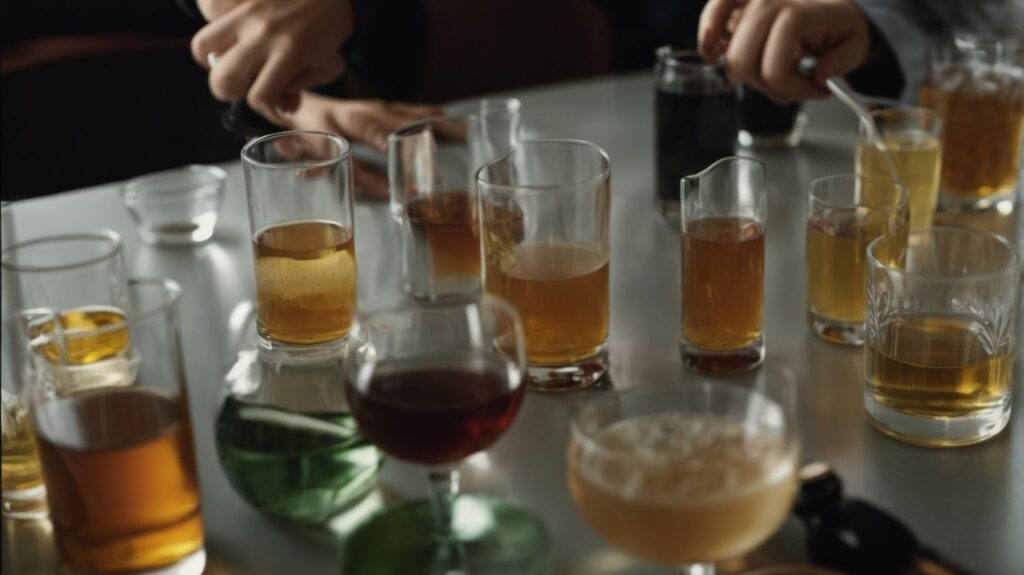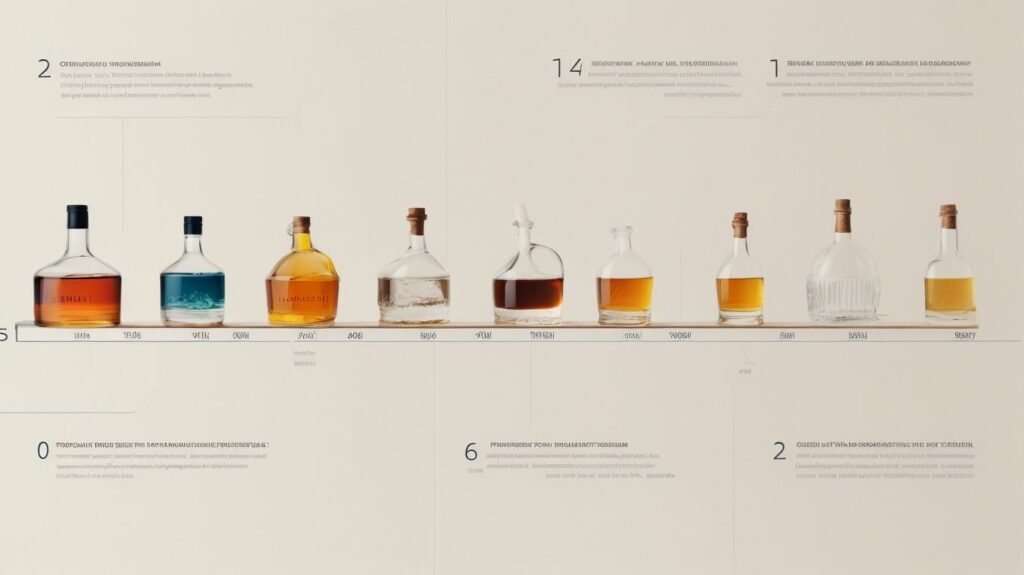20+ Years Experience
Specialist Alcohol Help

Did you know that alcohol consumption patterns and related issues vary significantly across the UK?
In this blog post, we will dive deep into fascinating “alcohol statistics and facts”, shedding light on the regional differences and gender disparities in alcohol use.
Get ready to discover the latest trends, health risks, and treatment options related to alcohol.
Alcohol consumption patterns in the UK are diverse, with 50% of adults drinking at least once a week and 20% not drinking at all.
Interestingly, alcohol preferences vary, with wine and beer being the most popular choices.
In this section, we will explore the frequency and quantity of alcohol consumed in the UK, as well as the preferred alcoholic beverages.
Half of UK adults consume alcohol at least weekly, with an increase likely to report to 58% of adults drink once per week during 2020/21. This rise in alcohol use may have led to an increased need for mental health treatment.
It is essential to consider the frequency of alcohol use when addressing its impact on individuals and society.
Adults aged 18 and over are advised to consume alcohol at least a maximum of 14 units per week, which equates to 6 glasses of wine or 6 pints of beer.
However, 19% of adults in the United Kingdom drank more alcohol at least the previous week because of total alcohol than this recommended limit.
Understanding the quantity of alcohol consumed is crucial in addressing alcohol-related health issues and tailoring effective interventions.
When it comes to alcoholic beverages, wine and beer take the top spots in the UK. These preferences may influence the types of alcohol-related issues faced by the population, as well as the strategies needed to address them.
Alcohol consumption can have a range of negative impacts on individuals and society, from health problems to health problems.
Binge drinking is a significant issue in the UK, with 18% of adults engaging in this behaviour after adults drank alcohol.
This dangerous practice of reported binge drinking, known as reported binge drinking, leads to heavy drinking with various health risks and social consequences.
We will discuss these in detail in the following subsections.
Binge drinking is a form of alcohol consumption in which larger amounts are drunk in a short period of time. For women, it’s 6 or more units and for men, it’s 8 or more units consumed in one session.
This excessive alcohol consumption can lead to severe health issues and negative social outcomes. Underlining the importance of addressing binge drinking in the UK is essential.
Binge drinking can lead to a range of health issues, including alcoholic liver disease.
Health risks associated with harmful use and binge drinking include liver damage, heart disease, and an increased risk of accidents.
These risks highlight the importance of addressing binge drinking and providing resources to help individuals reduce their alcohol consumption.
Education and awareness campaigns can help reduce harmful drinking and the prevalence low risk of binge alcoholic drinking- again- drinking alcohol again. These campaigns should focus on the youth.
Social consequences of binge drinking include violence, crime, and negative impacts on relationships. These issues emphasise the importance of addressing binge drinking from a societal perspective.
Implementing policies and offering support for those struggling with excessive alcohol consumption are key steps in tackling this issue.
Gender differences in alcohol consumption show that male and female drinkers have distinct patterns report drinking alcohol, with men generally both drinking alcohol more frequently and in larger quantities than women. However, preferences for types of alcohol are similar between genders.
In this section, we will delve deeper into the frequency, quantity, and types of alcohol consumed by men and women.
Men are more likely to drink alcohol and engage in binge drinking than women. This difference underlines the importance of considering gender when addressing alcohol-related health issues.
Tailoring interventions to meet the unique needs of men and women is essential in order to effectively address these issues.
Alcohol consumption, and harmful use including drinking alcohol and instances when individuals have drunk alcohol, is a major public health concern, with harmful use often leading to alcohol dependence in some individuals.
Understanding alcohol statistics can help address this issue more effectively, especially when considering the impact of pure alcohol on health.
Both men drink, and women prefer wine and beer as their alcoholic beverages of choice. Understanding these preferences can help inform targeted interventions and support services for those experiencing alcohol-related issues.
By understanding the preferences of different genders, it is possible to create more effective strategies for reducing gender differences.
Alcohol-related deaths and health issues are a significant concern, with alcohol being a causal factor in over 200 diseases and injuries.
In the following subsections, we will discuss alcohol-specific deaths and mental health issues related to alcohol consumption.
Alcohol-specific deaths are caused by acute alcohol intoxication, chronic alcohol-related problems or problematic alcohol or other substance use issues, or abuse, and alcohol-specific deaths are caused by injury conditions or alcohol-attributable deaths not by alcohol-specific deaths.
Alcohol-specific deaths, such as liver cirrhosis, certain cancers, and alcohol poisoning, are critical public health issues.
Understanding the causes and consequences of these deaths can help inform effective prevention and treatment strategies.
Alcohol-related deaths are preventable, and reducing the number of deaths requires a comprehensive approach.
Mental health issues related to alcohol consumption include depression, anxiety, and alcohol use disorder. Addressing these mental health concerns is essential in supporting individuals struggling with alcohol-related ill health problems and promoting overall well-being.
It is important to recognise the signs of mental health issues related to alcohol consumption and to provide support.
Alcohol treatment and recovery options vary, with success rates depending on factors such as individual motivation and support systems.
In the following subsections, we will discuss the types of alcohol treatment and the factors that contribute to their success.
Types of alcohol treatment include detoxification, counselling, and medication-assisted therapy. Each treatment option offers unique benefits and challenges, making it crucial to consider individual needs and circumstances when selecting the most appropriate approach, whether it’s an alcohol-only treatment or a more comprehensive plan.
When making a decision about alcohol treatment, it is important to consider the individual’s needs and circumstances.
Success rates for alcohol treatment depend on factors such as individual motivation, support systems, and the severity of the addiction.
Understanding these factors can help inform the development and implementation of effective treatment strategies and support services.
The economic impact of alcohol consumption is substantial, with costs related to healthcare, lost productivity, and criminal justice.
These expenses highlight the importance of addressing alcohol-related issues on both individual and societal levels.
Alcohol consumption can have a significant impact on individuals, families, and communities. It is problematic that alcohol use disorder can lead to problems.
Regional differences in alcohol consumption reveal varying drinking patterns and alcohol misuse-related issues across the UK. In the following subsections, we will explore these differences and their implications for public health and policy.
Understanding regional differences in alcohol consumption is important for informing public health and policy. Different regions have different climates.
Drinking patterns differ across regions, with some areas having higher rates of alcohol consumption and binge drinking.
Understanding these regional differences can help inform targeted interventions and support services tailored to the unique needs of each area.
Interventions and services should be tailored to the specific needs of each region, taking into account the specific needs of each region.
Alcohol-related issues, such as health problems and crime rates, also vary by region. Addressing these disparities requires a comprehensive approach that considers the unique challenges and needs of different communities.
This approach should include a range of strategies, from public health campaigns to targeted interventions. It should be.
Alcohol consumption can have serious health and safety risks, especially for women.
Key facts include that alcohol is the leading cause of preventable death.
Wine and beer are the two most popular alcoholic beverages per capita consumption per week, in the UK.
Binge drinking is defined as consuming 4 or more drinks by average age adults aged per alcoholic drink for women and 5 or more drinks per drink for men in a single sitting.
Drinking can lead to serious health consequences such as behavioural disorders such as liver damage, heart disease, and an increased risk of accidents.
These health risks can be long-term and even life-threatening. It is important to be aware of the dangers of excessive drinking and to take steps to reduce the risk.
There are several.
Alcohol treatment options include detoxification, counselling, and medication-assisted therapy, providing young people already struggling with alcohol addiction with the help they need to recover.
Detoxification helps to rid the body of alcohol and its toxins, while counselling provides individuals with the support and guidance they need to make positive changes in their lives. Medication-assisted therapy helps to reduce cravings and withdrawal symptoms.
In conclusion, alcohol consumption patterns and related issues are complex and multifaceted, with regional and gender differences playing a significant role.
Understanding these differences is crucial for developing effective interventions and support services that address the unique needs of individuals and communities.
By raising awareness of the health risks, social consequences, and economic impact of alcohol consumption, we can work together to create a healthier and safer society for all.
There are a range of other services that we can provide. Have a look at the list below for more information:











































































































































We Aim To Reply To All Enquiries With-in 24-Hours